Protecting emails in Outlook on the web
In this section, we'll see how to protect emails and attachments in Outlook on the web with Seclore's add-ins for Exchange Online and Exchange Server (on-premises) .
Let's see how to protect emails and attachments in Outlook on the web in Exchange Online.
Protecting emails and attachments
Audio/Video demonstration
Step-by-step
![]()
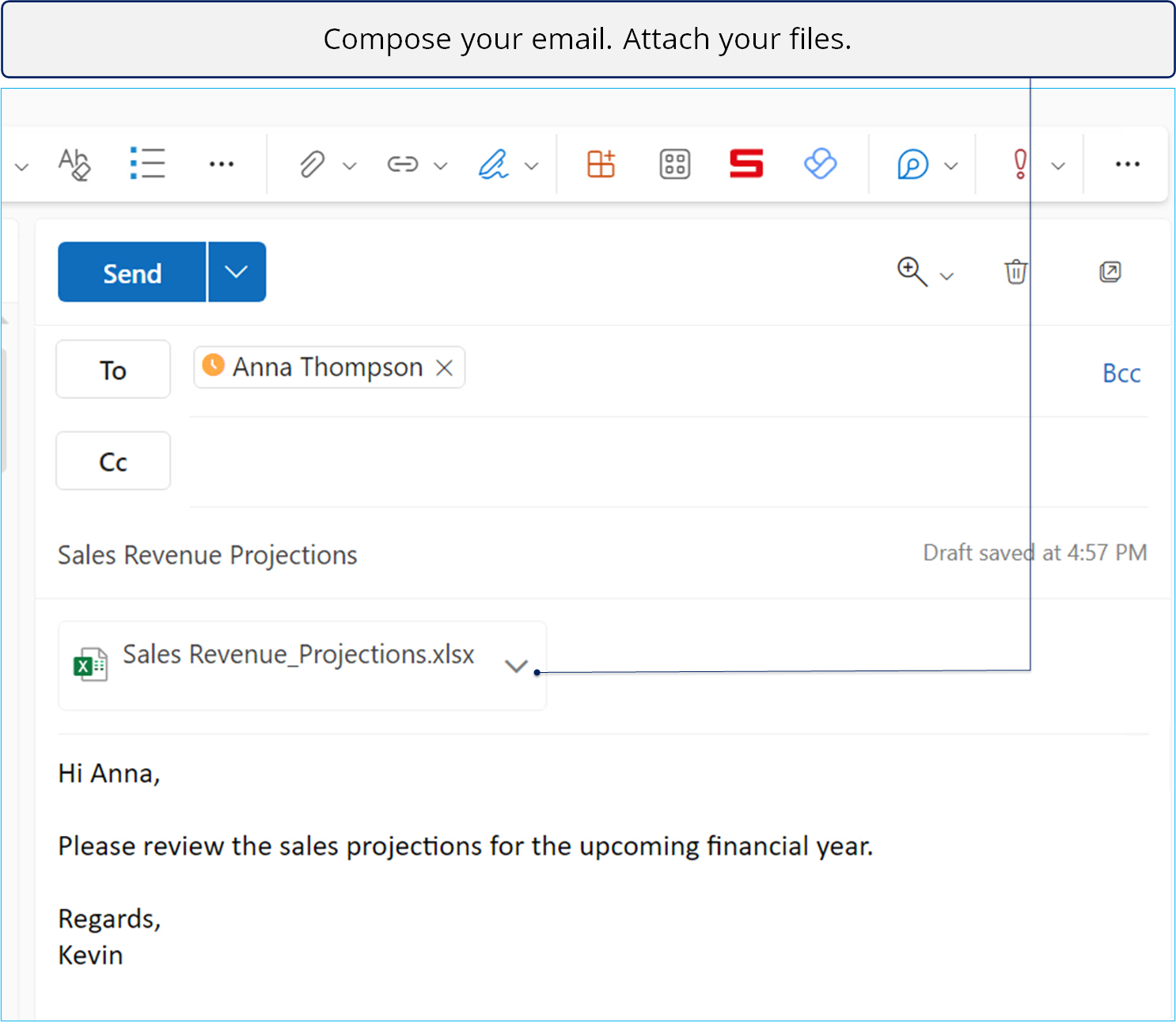
![]()
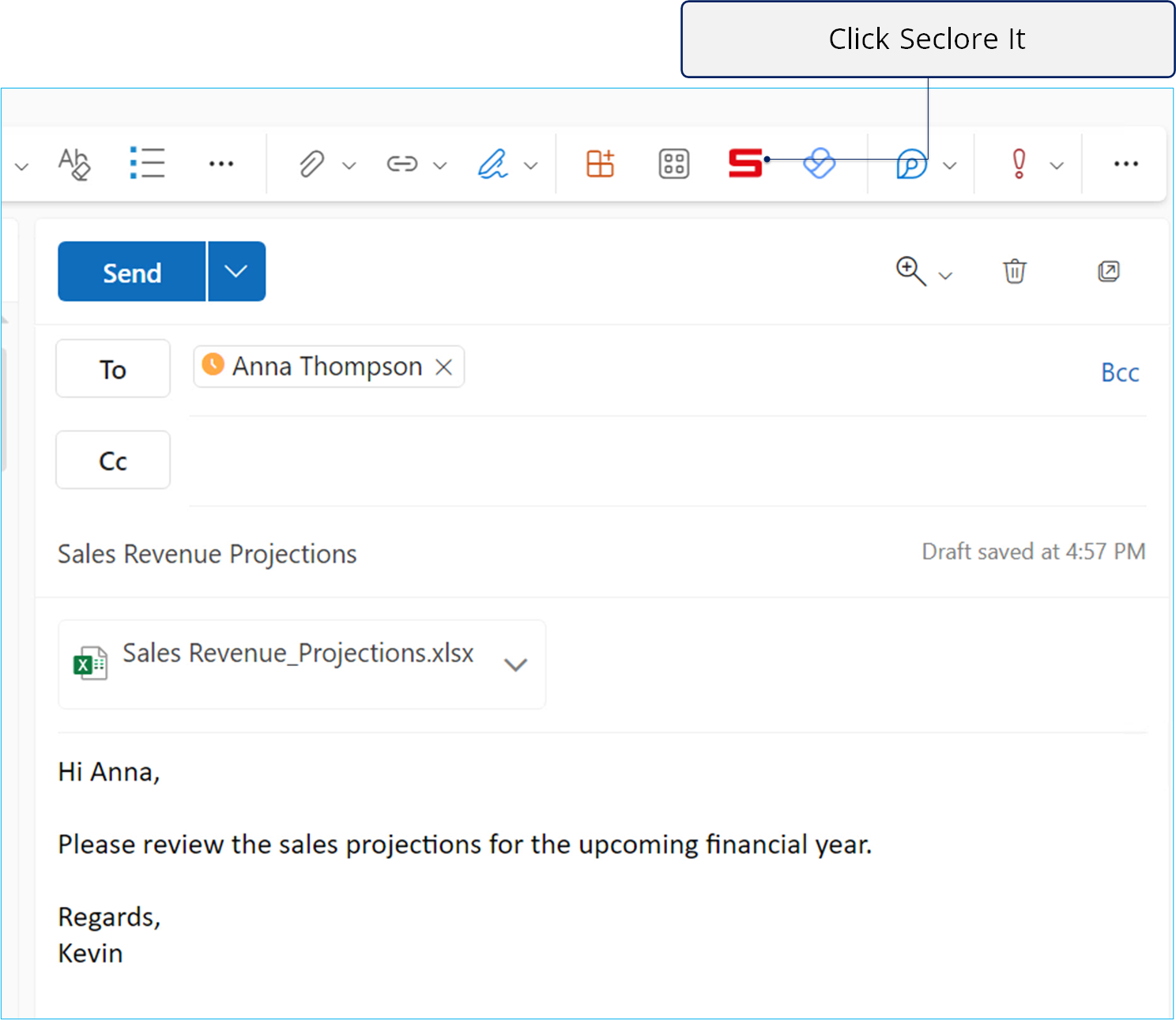
![]()
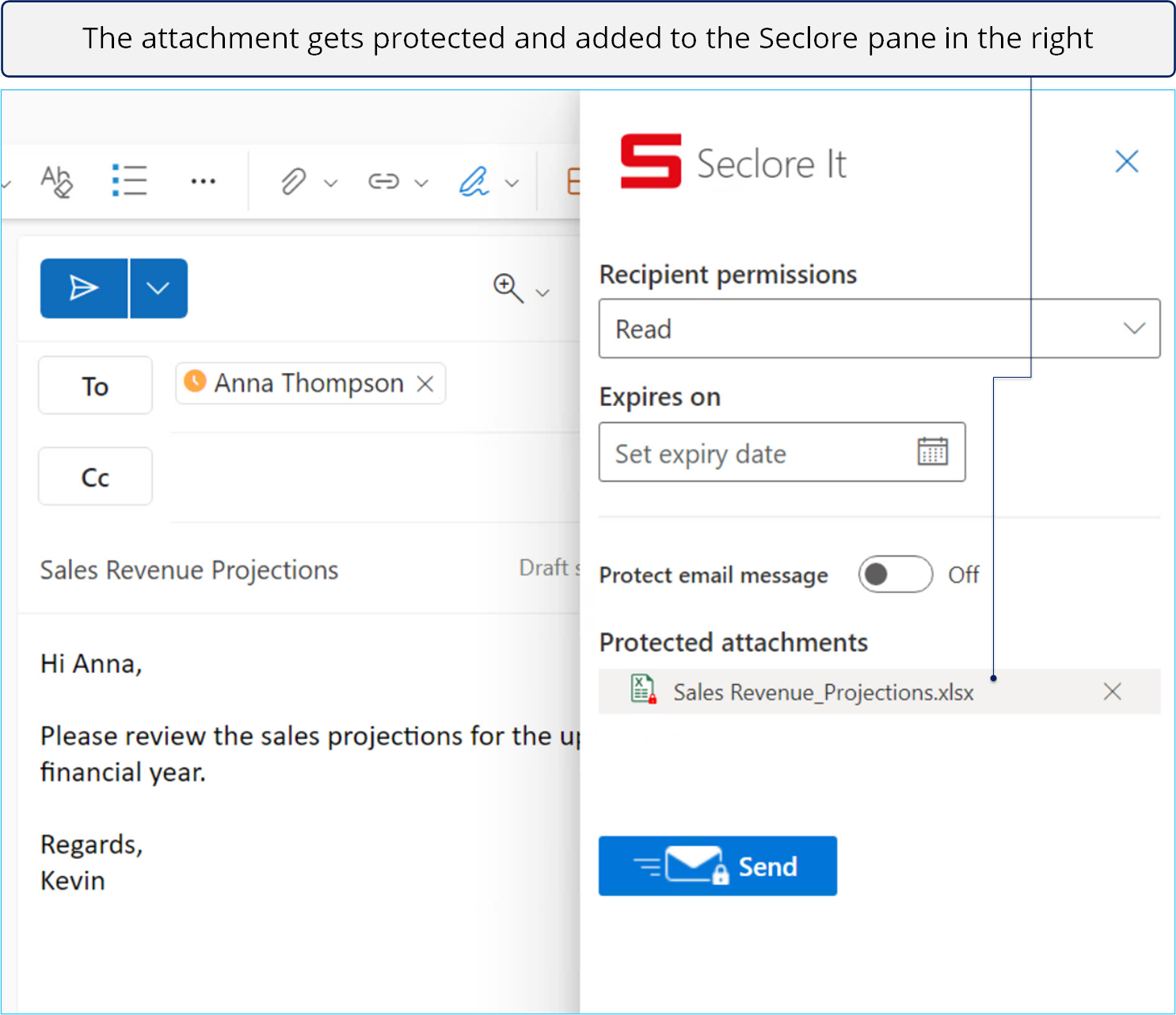
![]()
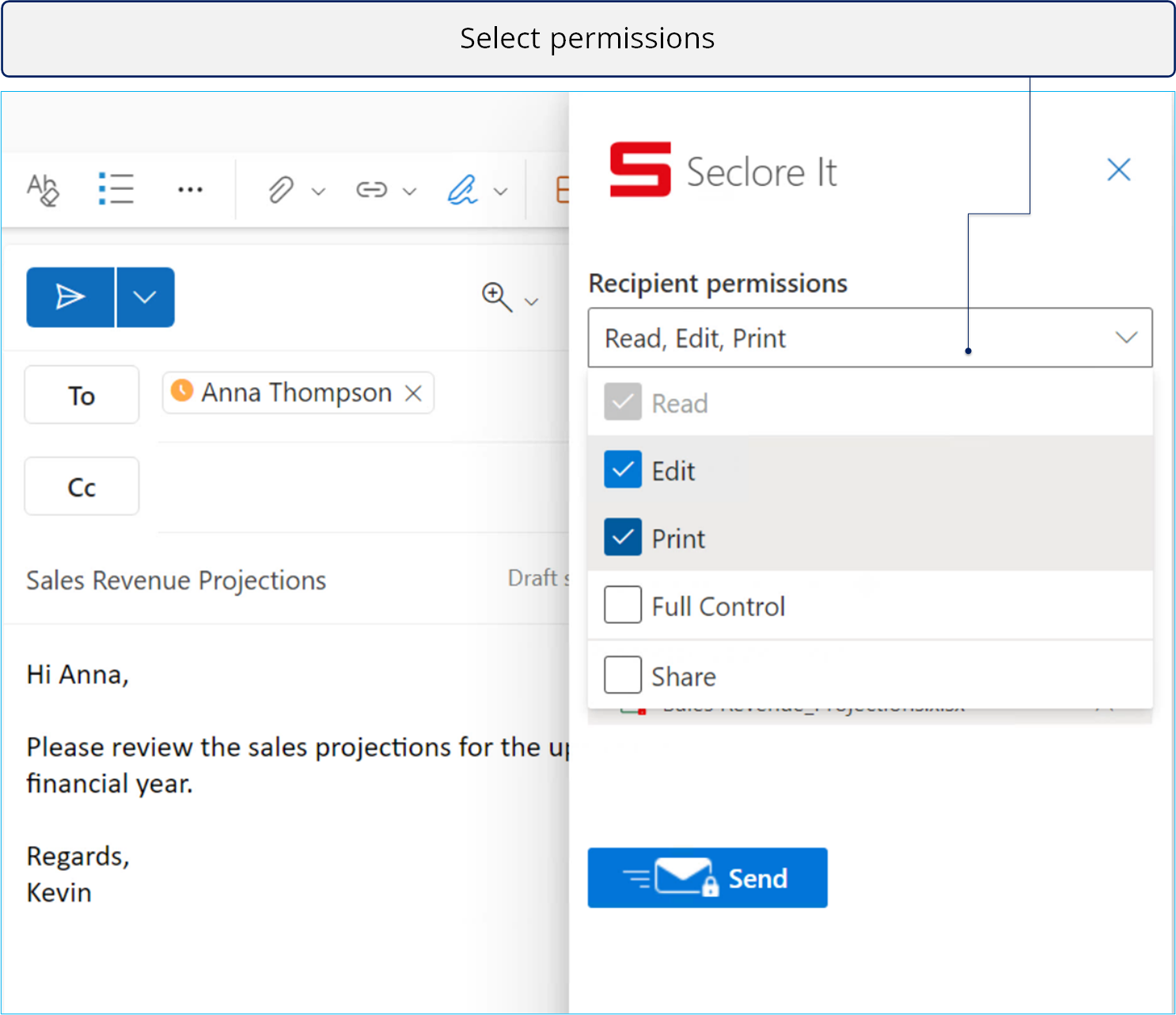
![]()
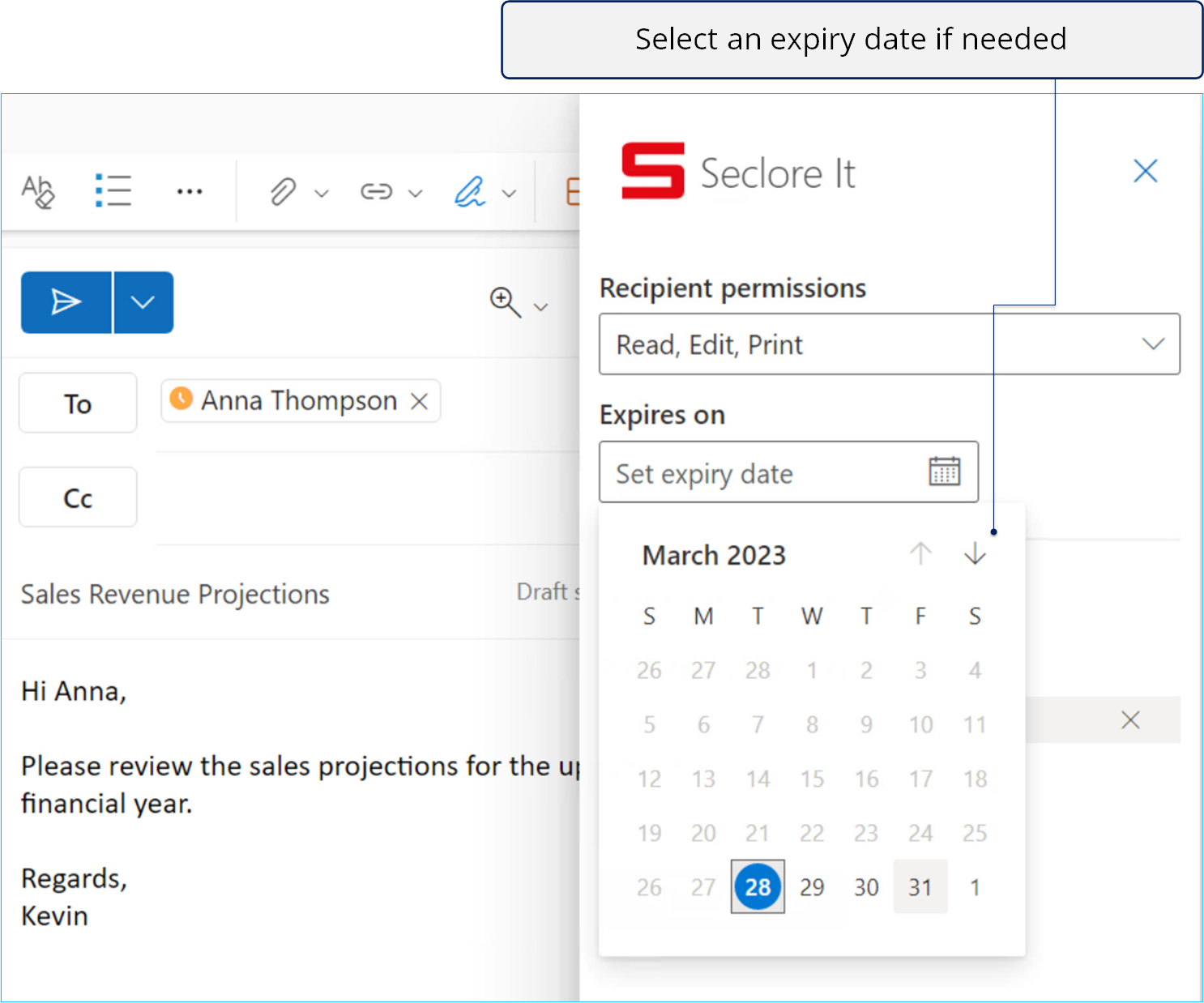
![]()
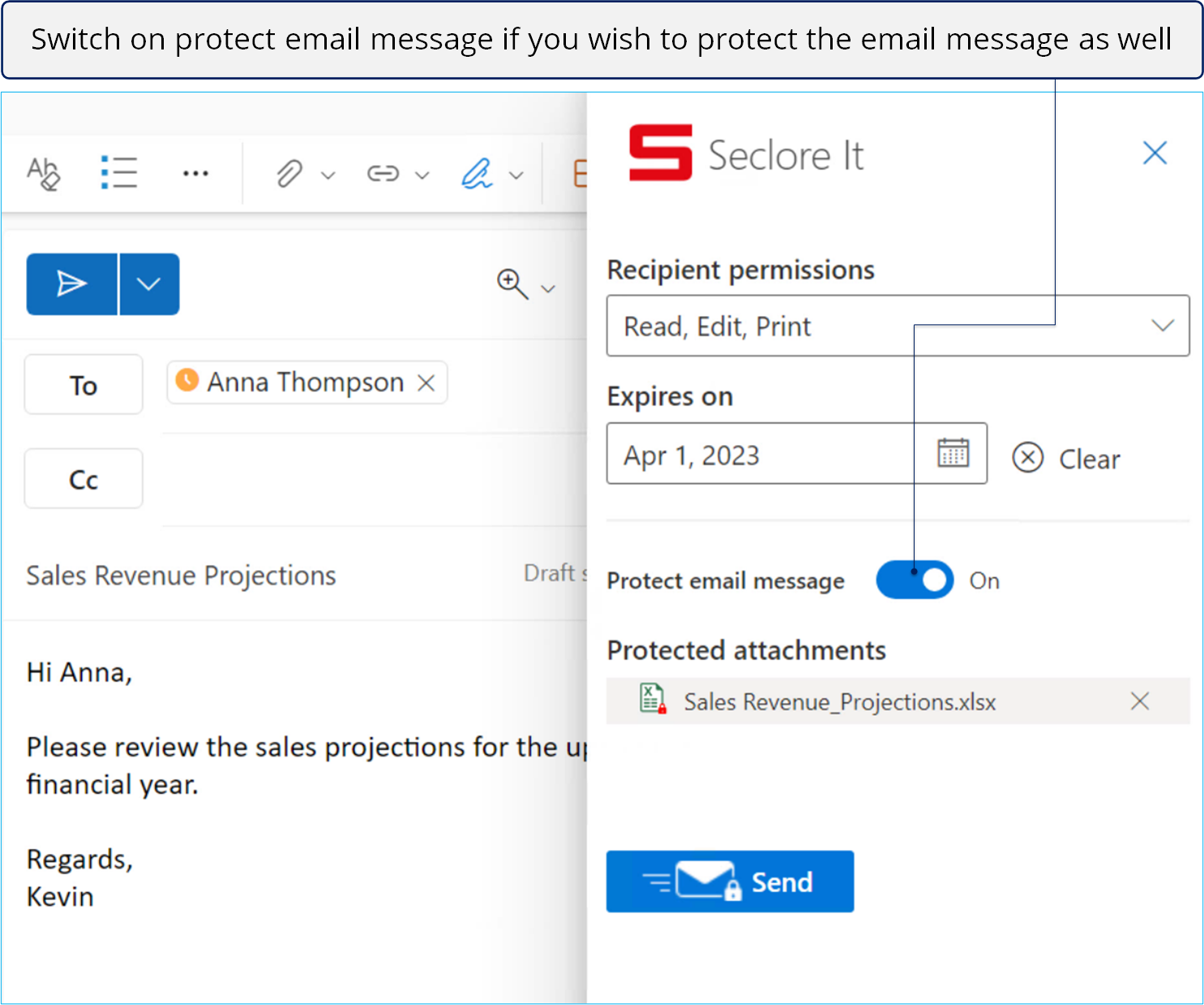
![]()

Smart Sharing
Smart Sharing is a feature that allows users to share their permissions on protected documents with other users while sending an email. The Smart Sharing feature is turned ON by default when a protected file is attached to an email and the Seclore add-in is invoked. If Smart Sharing is turned OFF, recipients won't receive the permissions that the sender has on the attached protected files.
Audio/Video demonstration
Step-by-step
![]()

![]()

![]()
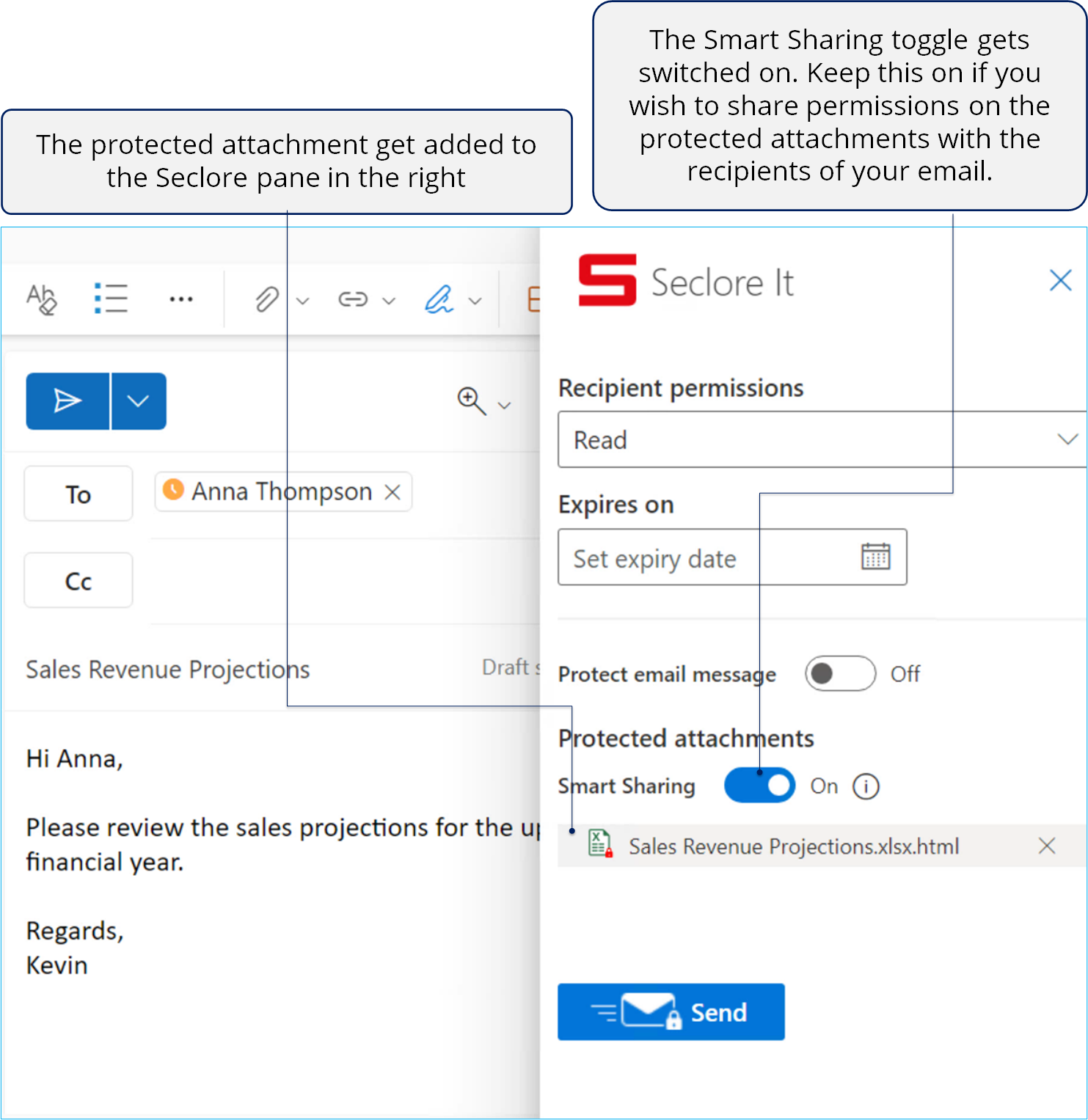
![]()
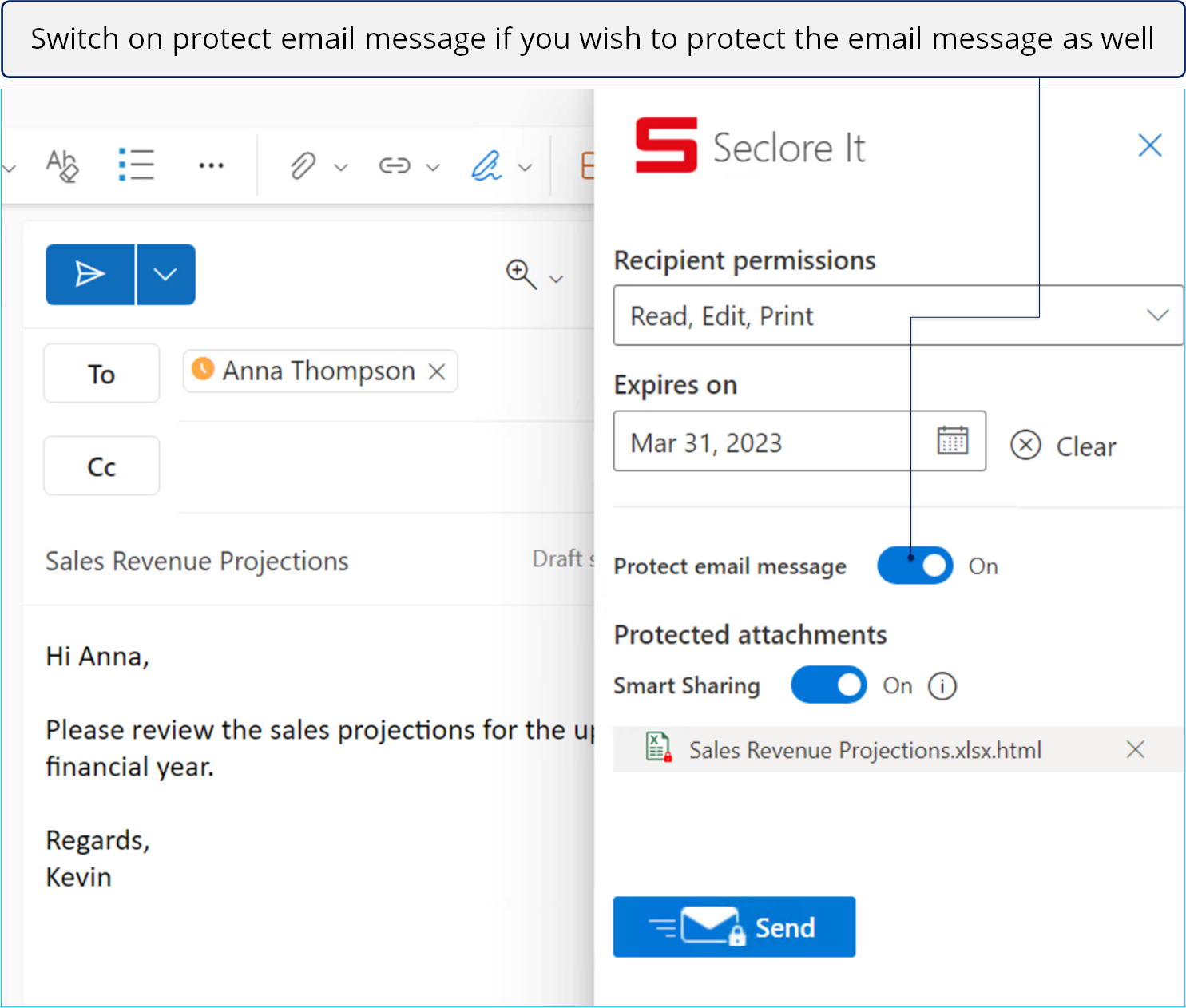
![]()
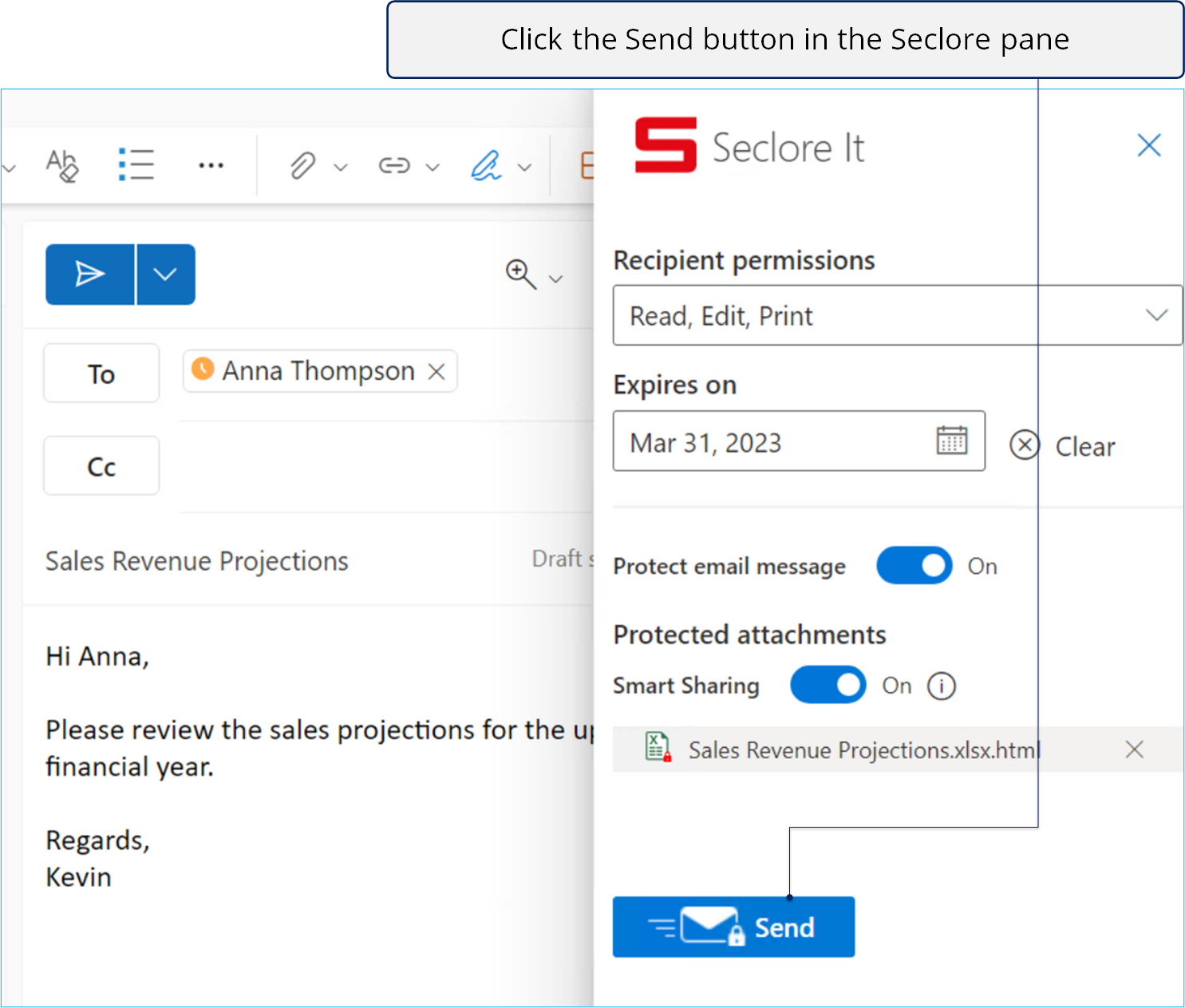
Let's see how to protect attachments in Outlook on the web in Exchange Server (on-premises).
![]()
Click the  button at the bottom of the compose window and click Seclore it!
button at the bottom of the compose window and click Seclore it!

![]()
Drag-and-drop attachments to the add-in section (to the right), and click Seclore and Send. Attachments dragged to the main Outlook window will not be protected. You may be asked to log in.

Note that the email body cannot be protected in Outlook on the web for Microsoft Exchange Server (on-premises).
Files uploaded directly to the Outlook compose section – and not to the Seclore plugin - will be sent without protection. Only files uploaded to the Seclore plugin pane to the right will be protected.
Sending the email from the Send button of the Outlook compose window will send only those attachments that have been explicitly dragged/uploaded to the Outlook compose window. Files uploaded to the Seclore add-in section will not be sent.
If you do not see the Seclore it! option, contact your administrator.